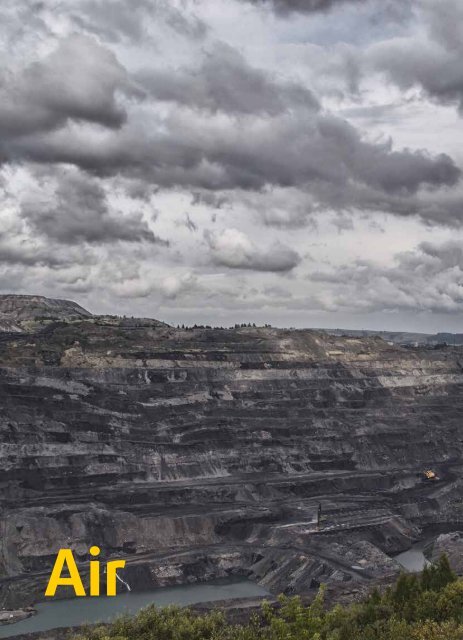of Coal
Russian Coal
Russian Coal
Create successful ePaper yourself
Turn your PDF publications into a flip-book with our unique Google optimized e-Paper software.
The Russian Federal Natural Resources Management Regulatory Service, Rosprirodnadzor, is<br />
responsible for the air condition monitoring. But as the agency admits, the existing network <strong>of</strong><br />
environmental monitoring stations is insufficient. Data on air conditions for major cities <strong>of</strong> the region,<br />
such as Belovo, Leninsk-Kuznetsky, Mezhdurecensk, Myski, Polysaevo, Osinniki, is unavailable.<br />
Meanwhile, the main inhabited area <strong>of</strong> Kemerovo Oblast is located in a cavity, therefore harmful<br />
substances emitted by the industry are not carried away with wind but accumulate right there forming<br />
photochemical smog.<br />
Unavailability <strong>of</strong> objective information about the state <strong>of</strong> the atmospheric air is a violation <strong>of</strong> the<br />
Russian citizen constitutional right to have an access to reliable information about the state <strong>of</strong> the<br />
environment.<br />
According to the Kemerovo Hydrometeorological and Environmental Monitoring Center, in 2014, there<br />
was a very high level <strong>of</strong> air pollution in Novokuznetsk, a high level <strong>of</strong> air pollution in Kemerovo, and a<br />
heightened level <strong>of</strong> air pollution in Prokopyevsk. Air pollution in these cities is for the most part due to<br />
high concentrations <strong>of</strong> benzpyrene and nitrogen dioxide.<br />
As medic experts estimate, chronic poisoning by air polluted with harmful substances and dust<br />
increase risks <strong>of</strong> sickness among the cities’ residents. As the analysis <strong>of</strong> health risks related to<br />
environmental contamination in Novokuznetsk shows, in 2007 the most contribution to chronic air<br />
poisoning was made by carbon oxide (77.4%), dust (15%), and nitrogen dioxide (3%).<br />
A characteristic for Kuzbass phenomenon visualizing the level <strong>of</strong> air pollution is black snow fallout.<br />
According to the <strong>of</strong>ficial report, snow in Kuzbass contains sulphur compounds, nitrites, nitrates,<br />
chlorides, potassium, and manganese.<br />
Gazeta Kemerovo: “An excess <strong>of</strong> a maximum allowable concentration <strong>of</strong><br />
polluting substances in the air was registered by meteorologists in Kemerovo<br />
and Novokuznetsk. An increased content <strong>of</strong> carbon black experts relate to stove<br />
heating in the private residence sector, while nitrogen oxide and dioxide as well<br />
as carbon oxide are due to industrial emissions and windless weather conditions.<br />
Air<br />
11


